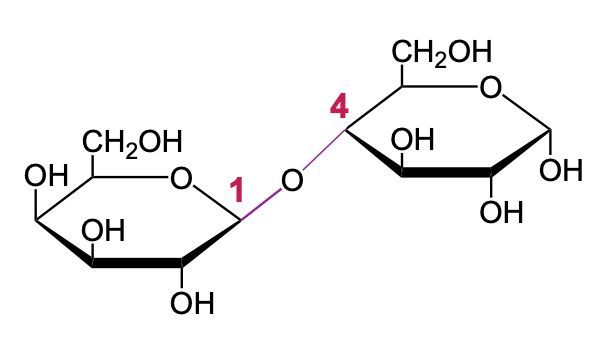Now remember, a disaccharide is when we have two monosaccharides connected to each other by glycosidic linkage. We're going to say there are different types of disaccharides. We're going to say many disaccharides exist, but the most common ones are maltose, cellobiose, lactose, and sucrose. If we take a look here at this chart, we have the two types of sugars that are involved in the creation of this particular common disaccharide. We then talk about the type of linkage that it contains, whether it be alpha or beta, or a combination of the two. Then we talk about what's the name of the disaccharide. And then finally some common examples that might contain this disaccharide. If we take a look at the first one, we have D-glucose plus D-glucose. They together are going to give me an alpha-1,4 linkage. When we have two D-glucose molecules giving us an Alpha 1,4 linkage, this gives us maltose as our disaccharide. And here we have an example of barley. Now, maltose you can find in different types of beer, hops, barley, these are important ingredients that help to create different types of beer.
Now, next, we again have D-glucose and D-glucose. But what's going on here? Well, the first one dealt with alpha-1,4, and now we're dealing with beta-1,4. So the linkage here is different. In this case, this would give us cellobiose. Now, here we have a jar of honey. Honey itself is digestible by us, but it contains trace amounts of this particular disaccharide. So this is a common everyday food that has little bits of this particular type of disaccharide present within it.
Now, next we see that D-glucose is still involved. D-glucose kind of forms a foundation for a lot of these disaccharides. So now we have D-glucose, but instead of having two D-glucose, we're going to have D-galactose involved. So here we're going to say, D-galactose plus D-glucose is going to give us here, a Beta 1,4 linkage, and that's going to give us Lactose as our Disaccharide. Lactose, a great example, milk. Milk sugar is lactose. Now, typically human beings can't digest beta linkages, but we as human beings have lactase as an enzyme within ourselves that helps us to break down this milk sugar. Those of us who are lactose intolerant, who can't digest dairy very well, it's because we have very little of this enzyme or over time it degrades, and we just don't have a lot of it to help us process milk and other types of dairy products.
Now next, again we have D-glucose as our base, and we're going to have it reacting with D-fructose. This would help us to create sucrose. Sucrose here. Sucrose is table sugar. And remember, we've talked about sucrose. Sucrose is very different from other disaccharides. Here it has both an alpha and beta linkage. It would be alpha-1 and beta-2 linkage. So these are our four most common types of disaccharides, and these are some common everyday examples that contain some of these common types of disaccharides.


